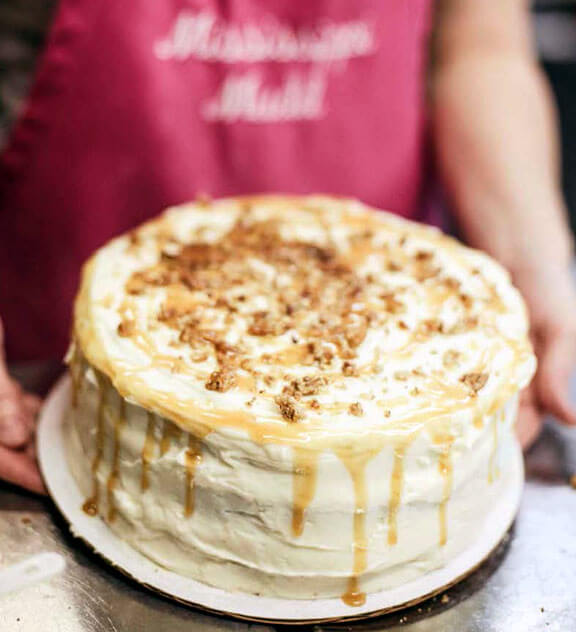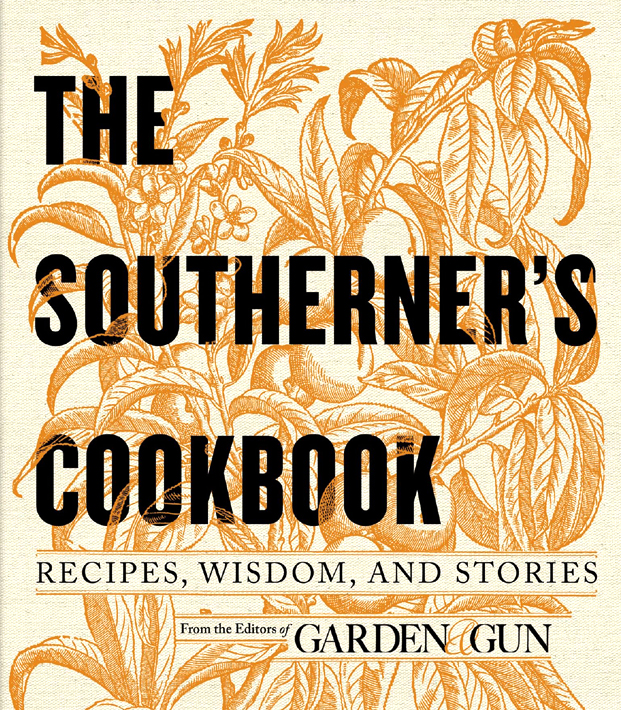Like many towns in the upland South, Vardaman grew up around a timber railhead. Some of the lordliest white oaks that ever left the continent descended from the hills above Vardaman and were shipped across the Atlantic to construct the great barrels that held the finest wines of the 1925 Exposition of Paris. But after the lumber was gone, farmers in the area turned to the sweet potato and their intuitions were crowned with success. Vardaman is now the (admittedly self-proclaimed) Sweet Potato Capital of the World.
 The distaff side of my family is from Vardaman, and I’ve been eating sweet potatoes my whole life, so for a long time I’ve been sailing along considering myself an expert on the subject. Then here comes this McGreger girl who blows my dinghy out of the water. April McGreger has chops; whereas my father was a lawyer from Sarepta (sue me), she is a sweet potato farmer’s daughter from Vardaman proper.
The distaff side of my family is from Vardaman, and I’ve been eating sweet potatoes my whole life, so for a long time I’ve been sailing along considering myself an expert on the subject. Then here comes this McGreger girl who blows my dinghy out of the water. April McGreger has chops; whereas my father was a lawyer from Sarepta (sue me), she is a sweet potato farmer’s daughter from Vardaman proper.
In her introduction to Sweet Potatoes, the tenth installment in the University of North Carolina Press’ “Savor the South” series, McGreger says, “By the time I was a teenager, I had worked at pulling slips, the shoots that densely bedded ‘seed’ sweet potatoes send up, and had spent a couple of summers riding the ‘setter’ that plants those sweet potato slips in expansive fields. I learned firsthand how eyes and ears and noses fill with dust from the warm, just-plowed earth and how the modern farmer’s schedule is set by nature and financial demands, often at odds with each other.”
People you have no idea how refreshing, how delightful it is to find a book about food written by a genuine human being who has a fundamental knowledge of “farm to table” and not by one of these pompous foodways pundits who don’t know a roux from a rutabaga or a kitchen flim-flam aristo whose closest connection to the earth is trying to grow weed on his daddy’s back forty before flunking out of college and entering culinary school. McGreger is a very fine writer (as we expect of Mississippi’s children) and a scholar to boot, so she takes an appropriately schoolmarmish tone when it comes to sweet potatoes. In her own rhetoric, she poses the question “Is there any food more central to our southern identity than sweet potatoes?”
The short answer is no, and perhaps for that very reason the sweet potato demands definition, particularly as a botanical and linguistic entity. I’ll leave that explanation to April, who does a thorough job of sorting out the Latin as well as the vernacular. She spends some time on the history of this important foodstuff, pointing out the antiquity of its use and cultivation in the New World as well as its introduction to the Old. Central to her narrative is the role of the sweet potato in the culinary history of the American South where it’s been keeping body and soul together throughout the region’s tumultuous history.
McGreger laments, “Once such a prominent food in the southern diet, the sweet potato is now eaten by many only on Thanksgiving in the form of sweet potato casserole or sweet potato pie”, and her selection of recipes is designed to illustrate the versatility of the sweet potato and to provide cooks at every level of proficiency with a means of making them more of a staple in the kitchen”, as well they should be. She chafes at being restricted to only fifty recipes, but to her credit she offers a spectacular variety “aimed to help you refine techniques to develop your own repertoire.” These are arranged in four categories: “Breakfast: Morning Pastries, Grits, Gravy, and Hash”; “Sides and Salads: Vintage Classics and Fresh, Modern Twists”; “Mains, Soups, Stews, and In-Betweens: A World of Flavor”; and “Desserts: A Little Something Sweet”.
Before getting to the recipes proper, McGreger includes a crucial section concerning the selection, storage and preparation of sweet potatoes as well as a description of a few of the most essential culinary varieties (some have been developed as a garden ornamental) and what sorts of dishes they are best suited. Granted most of us have access only to the traditional “moist, orange-fleshed, and sweet” types, but it’s worth knowing other varieties are out there, and if the trend to greater diversity in the marketplace and the proliferation of farmers’ markets continues, finding whites, yellows, purples and heirloom varieties is something to look forward to.
Equally important is her section on selection and storage, since while she recommends buying sweet potatoes “dirty by the bushel, directly from a farmer”, the roots must be cured in a warm, humid environment for a few weeks in order to fully develop their flavor. Most essential is McGreger’s advice on the preparation of sweet potatoes, and since she is clearly the final court of authority when it comes to cooking these vegetables (roots and leaves, it’s worth noting), this section is the heart of her work.
April wryly regrets never winning the Little Miss Sweet Potato crown, but a lot of thought, a lot of time, and a lot of love went into this wonderful work, and in my less-than-humble opinion it establishes April McGreger as not merely a Little Miss, nor even a Queen, but as the Empress of Sweet Potatoes.



